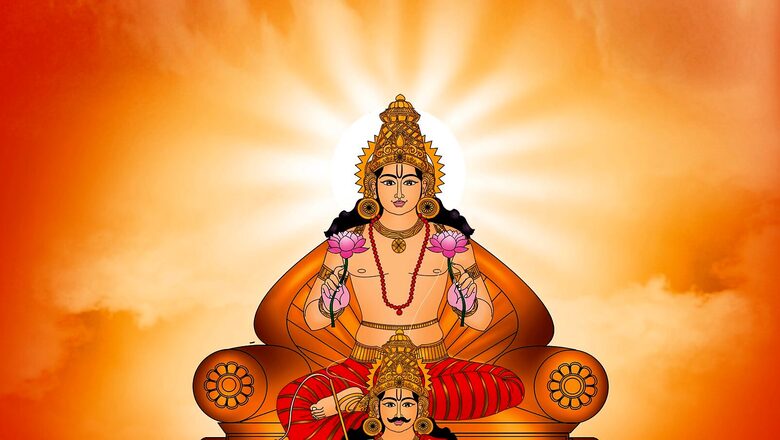
views
Simha Sankranti marks the transition of Sun from Karka Rashi (Cancer) to Simha (Leo) Rashi. It is known as Simha Sankramana in southern India and is a significant festival. The day also marks the beginning of the Chinga month as per the Malayalam calendar, Avni month as per Tamil month and Bhadra month as per the Bengali calendar. It is one of the 12 Sankrantis that take place every year. Sankrantis are considered highly auspicious for performing ancestral rituals like Shraddha and Tarpanam and daana-Punya activities. Lord Sun and Lord Vishnu are worshipped primarily on this day. Know about the Tithi, time, rituals and significance of the day.
Simha Sankranti 2021: Date and time
This year, it will be observed on August 17. Simha Sankranti Punya Kala will prevail from 5:51 am to 12:25 pm while Maha Punya Kala timing is 5:51 am to 8:03 am. The sun will move from Karka Rashi to Simha Rashi at 1:32 am.
Simha Sankranti: Rituals of the day
On Simha Sankranti, Lord Vishnu, Lord Sun, and Lord Narsimha Swami are mainly worshipped. The puja starts with Nariyal (coconut) abhisheka as it is considered a part of the holy bath. Only fresh coconut water is used in abhisheka. The puja begins with worshipping Lord Ganesha to seek his blessings. It is called the appada puja after which flowers, fruits and sweets are offered to the deity and mantras are chanted to seek blessings. The Hoovina puja to Lord Vishnumurthy that begins on this day, continues until the sun transits to Kanya Rashi.
Simha Sankranti: Significance
Though Simha Sankranti is celebrated primarily in the southern states of India, it is also celebrated in the Kumaun belt of Uttarakhand. It is believed that during the reign of the Chand dynasty, artisans displayed their products in front of the king on Simha Sankranti and were suitably rewarded for their efforts.
Common people too became a part of the celebrations and offered fruits and flowers to the members of the royal family and this tradition was known as Rite of Olag. It is also known as Ghrit Sankranti in the Bageshwar region of Kumaun in Uttarakhand because of the widespread use of ghee on the occasion.
Read all the Latest News, Breaking News and Assembly Elections Live Updates here.



















Comments
0 comment